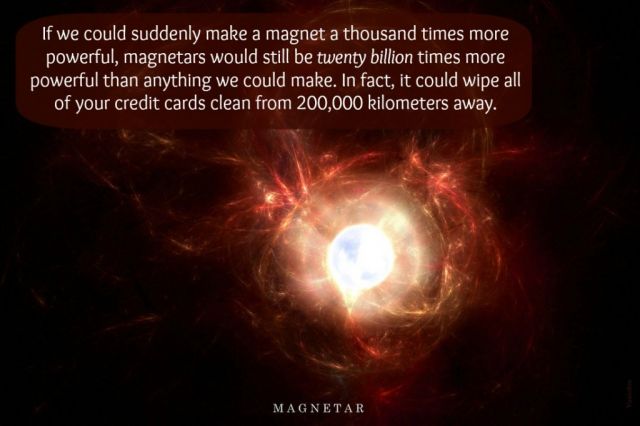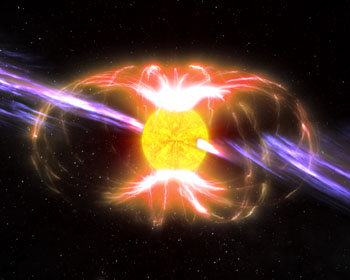| Online: | |
| Visits: | |
| Stories: |
The Amazing Magnetars Have The Most Powerful Magnetic Fields (Video)
Saturday, February 8, 2014 6:08
% of readers think this story is Fact. Add your two cents.
(N.Morgan) Magnestars is a type of neutron star with an extremely powerful magnetic field. They’re known to erupt without warning and can go on for days or even months, before dimming and disappearing again. They can play hide and seek with astronomers and are an extraordinary event. We only know of about 10 magnetars in the Milky Way galaxy.” remarked Dr. Peter Woods of the Universities Space Research Association. “If the antics of the magnetar we are studying now are typical, then there very well could be hundreds more out there.” NASA research has suggested there may be far more magnetars than previously thought.
Observing the explosions from these celestial bodies has been tricky. The answer lies in the timing. So how do the researchers observe what has never been seen? Leave it to NASA to develop the perfect piece of equipment to handle the job. The Rossi X-ray Timing Explorer (RXTE), launched in December 1995 from Kennedy Space Center, Fla., was designed to observe fast-moving neutron stars, X-ray pulsars and bursts of X-rays that brighten the sky and disappear. Some pulsars spin over a thousand times a second. A neutron star generates a gravitational pull so powerful that a marshmallow impacting the star’s surface would hit with the force of a thousand hydrogen bombs.


More Stories:
Victory! No Charges Against Man Who Shot And Killed Cop During No Knock Raid!
10 Reusable Preps To Replace Disposables (Video)
HAARP, Scalar, Mind Control, Chemtrails And BlueBeam (Video)
Depopulation At Work: 2 Dead, 81 Hospitalized In Oregon H1N1 Flu Cases (Video)
“You Just Shot An Unarmed Man!”: Witness Says Police Shot His Friend With His Hands Up (Video)
The First Congressman To Battle The NSA Is Dead
SHTF Transportation – Prepare To Get There (Video)
4,600-Year-Old Pyramid Discovered In Egypt – Video!
College Students Sign Petition To Imprison All Registered Gun Owners! (Video)
Hacker Who Cracked Obama’s Social Security Number, Arrested! (Video)
US Missiles On Russia Borders, Provocative (Video)
California Is Shutting Off The Water To Millions Of Residents! (Video)
Iceland Drills Into Magma For Renewable Energy (Video)
More Stories Contributed By N. Morgan
Also featured at:
AlternativeNewsToMe1 – Blogspot
AlternativeNewsToMe1 – WordPress





